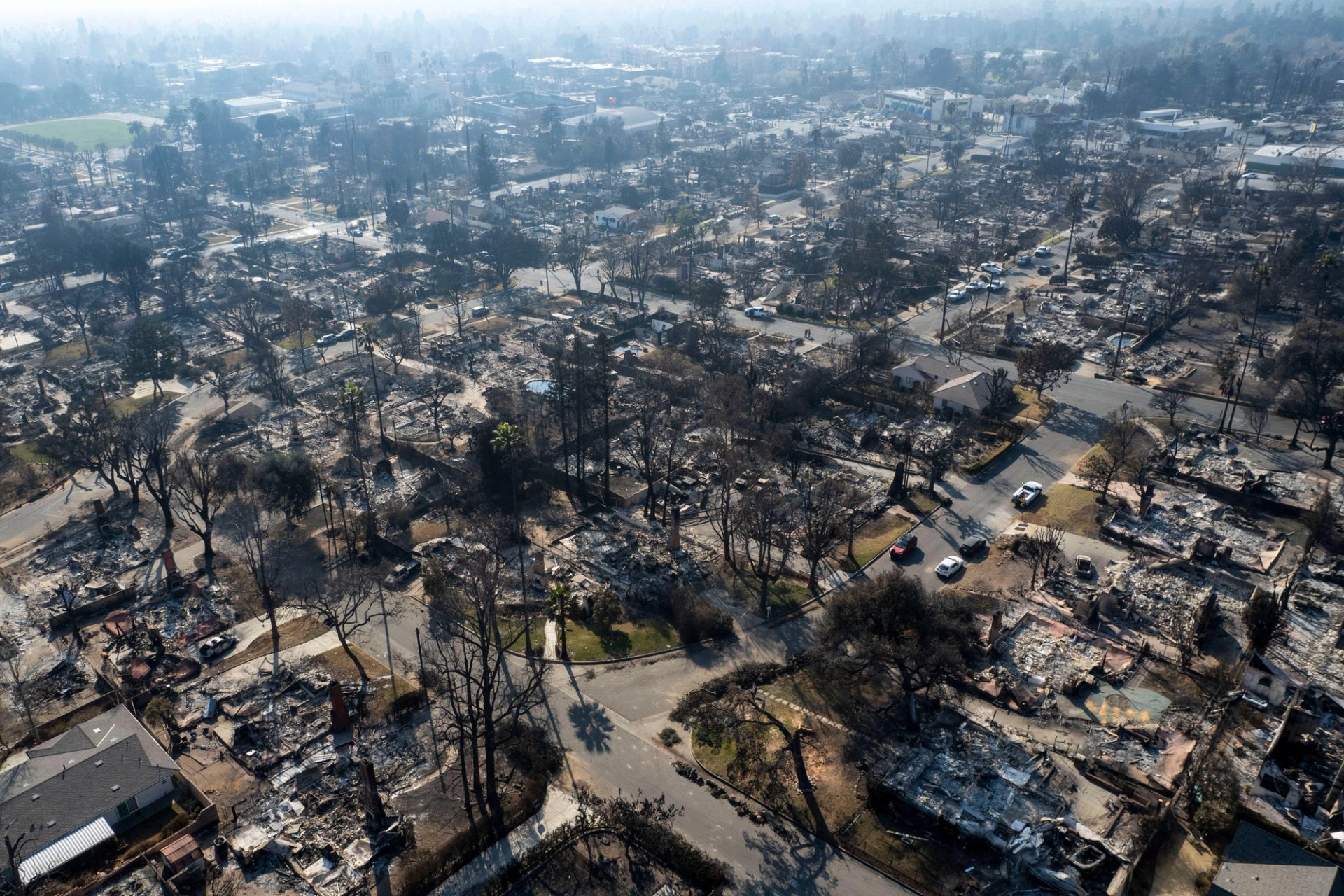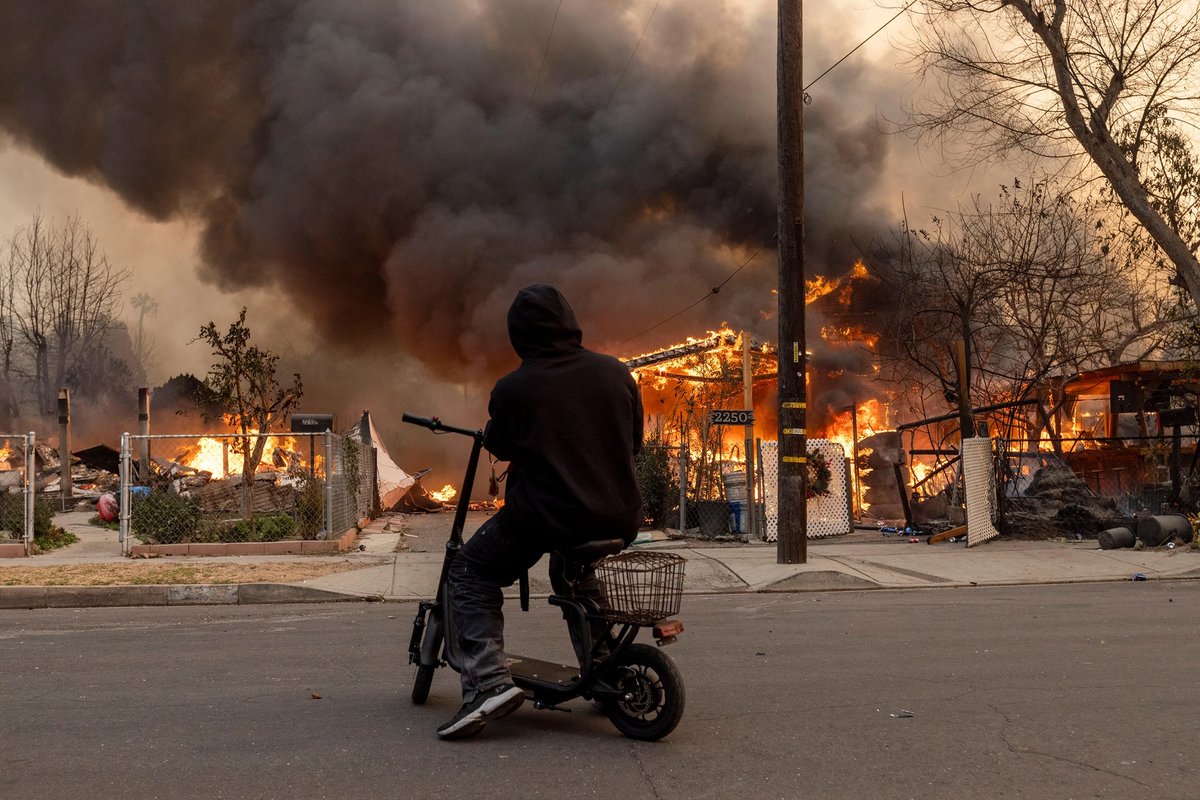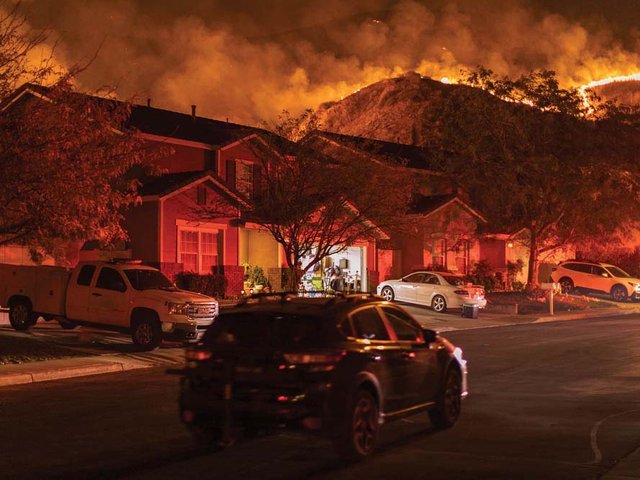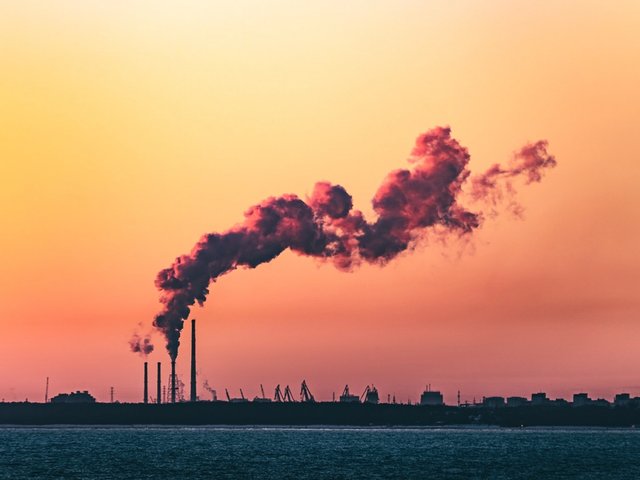The wildfires that burned more than 40,000 acres in and around Los Angeles last month devastated the neighbourhoods of Altadena, Pacific Palisades and parts of Malibu—killing at least 28 people and destroying or damaging more than 15,000 buildings. They have also left insurers and those in the art world wondering how to begin calculating the financial and cultural heritage loss.
As insurance adjusters and fine art specialists descend on the area to assess the damage to private art collections and artists’ studios, fine art insurance specialists including Simon de Burgh Codrington, the managing director at the insurance brokerage Risk Strategies, say that since Los Angeles is an art world epicentre, it is fair to assume substantial losses but also much too early to speculate on dollar amounts. “We are aware of several very large losses but have not yet heard associated numbers,” De Burgh Codrington says.
In mid-January the global reinsurance brokerage firm Gallagher Re released a report estimating insured losses of between $20bn and $30bn, including expensive personal property like fine art. The reinsurance firm Aon, meanwhile, suggests that, in terms of insured losses, the Los Angeles fires are set to become the most expensive in US history.

A drone captures the damage to buildings caused by the Eaton fire in Altadena. While insurance premiums are frozen this year, residents can expect substantial hikes in 2026 Photo: © Ringo Chiu/SOPA Images via ZUMA Press Wire; ZUMA Press Inc/Alamy Stock Photo
The alarming realisation that one climate-fuelled catastrophe can destroy entire collections and threaten institutions like the Getty Center and the Getty Villa has gallerists, collectors, artists and art advisers bracing for premium increases, stricter underwriting and new risk mitigation requirements. While the California state insurance commissioner has prohibited insurers from cancelling homeowner policies this year, with many policy holders attaching fine art riders to that coverage, in 2026 consumers can expect rate increases and stricter underwriting for both home and separate fine art insurance policies.
“To be honest, I think there will be a hardening of premiums, but we’re not talking about massive decimal point movements,” De Burgh Codrington says of fine art insurance rates. “Much of that hardening will depend on the risk basis, the location, what has been done to protect neighbourhoods and actual individual properties.”
Jack Siebert, a Los Angeles-based curator, collector and art adviser known for championing emerging artists and acquiring six-figure works at auction, says: “I hate to say it because this is my business, but I think some people are not going to want to live with expensive art anymore. I think it’s too big of a risk even if you have insurance. A great part of Los Angeles is a fire zone, and I don’t think insurance companies are going to write the same kind of policies they did before; it’s going to get too complicated.”
High-tech measures
Muys Snijders, the senior vice president and head of art services at Private Client Select insurance, writes over email that, going forward, risk mitigation requirements could take into account building, use of fire-resistant stone, concrete and protected steel, and analysis of surrounding buildings, as well as landscaping and a location’s access to bodies of water. She also suggests implementation of high-tech measures used by art storage facilities and museums like the Getty, such as automatic fire doors, windows and air-conditioning systems. “Many new technologies have been introduced in recent years to support these mitigation efforts,” she writes, including on-site hypoxic storage areas where collections can be secured in low-oxygen environments, making it difficult for fires to ignite or spread.
“The care of an art collection is not for the faint of heart,” Anne Rappa, the senior vice president and fine art practice leader at the insurance brokerage Marsh McLennan Agency, writes via email. “There is a lot of work involved in the care and preservation of an art collection and there are many stakeholders involved to properly protect that collection.”
In the first days of the Los Angeles fires, one of those stakeholders, the art logistics firm Gander & White, sprinted into action and activated elaborate emergency art evacuation plans for three clients, a contingency instituted at the behest of their insurance companies that the business had never enacted in Los Angeles until this fire event.
“We work with insurance companies that are concerned with the potential loss of high-value pieces so we come up with a realistic list of artworks we can extract, pre-build crates, hold the crates in storage and come up with a manageable six-hour extraction plan because we’re running under time and [during a fire] we’re in a dangerous position,” says George Lacovara, Gander & White’s Los Angeles location director. As the evacuation orders spread, Lacovara’s team took on five more clients and did quick triage extractions. If insurers demand more of these contingency plans, he foresees expanding such services for clients, noting that the company already had increased evacuation plans for Florida clients after intensifying hurricane events in that region.
But there are disparities between high-net-worth collectors and others like Kai Loebach who, over the years, has amassed a personal collection he values at several million dollars, including works by Gerhard Richter, Gabriel Orozco, Theaster Gates and Zanele Muholi. He lives with some of the pieces and keeps some in storage. When he received an evacuation order with ten minutes to spare, he grabbed some clothes and a handful of favourite pieces he could carry out the door. Loebach has tried to secure fine art insurance but because he lives in a Los Angeles canyon deemed a fire zone, he has been unsuccessful. “You’d have to build a bunker,” he says. “That’s basically what the Getty is, and I don’t want to live in a house like that.”
Loebach recognises the risk of not having insurance but believes that these climate-fuelled events will become more frequent and even risk mitigation is not a safety guarantee with such fast-moving catastrophes. To cope, he has adopted a philosophical approach: “Of course I’d be devastated if I lost my collection but, if you think about it, everything is on loan; what matters most is that we are healthy and alive.”
No guarantee
Kinsey Robb, the executive director of the Art Dealers Association of America, says that for artists and gallerists impacted by the fires, the insurance conversation is now focused on assisting those immediately affected with filing claims and securing financial assistance. “Most of these artists are working in small home studios and a lot of our galleries are small businesses, too,” she says. “But we are starting to have conversations about higher premiums, restricted coverage and the ways we can adapt with the insurance industry for more tailored solutions for galleries, artists and museums.”
Robb remains hopeful. “In the past couple weeks, we’ve seen insurers actively engaging with the arts community on various platforms about risk management to see what we can do better to prepare for the next one,” she says.
De Burgh Codrington characterises the fine art insurance market as historically resilient in the face of ongoing catastrophic events around the globe. “To underline that resilience, I got an email this morning from an underwriter we do a lot of business with from London. He was reaffirming his commitment to writing risks in California and said don’t feel scared to show me clients in California,” he says. “That doesn’t mean there won’t be underwriting considerations, whether it’s pricing or other conditions, but it means they are not running away.”
For blue-chip collectors and art advisers like Barbara Guggenheim, who counts among her clients wealthy Hollywood industry professionals and celebrities, risk mitigation and insurance premiums may affect the buying habits of collectors with less discretionary income most severely.
“Insurance or not, you lose the thing that you loved, which is tragic,” says Guggenheim, who lost her Malibu home in the Palisades fire. “When you’re talking about art, one thing doesn’t replace the other. What you had was unique and spoke to you.” She suffered great material loss, but adds that she is more concerned about the economic impact on workers in the affected areas who lost employment. Regarding affluent collectors who may face higher premiums and granular underwriting, she says: “They like living with art and I think collectors who have a lot of money are going to do what they need to and pay the piper.”





